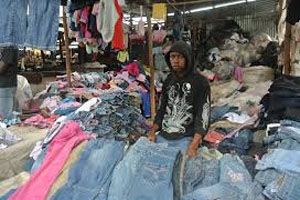
Import of secondhand clothes continue to clog textile industry
YarnsandFibers News Bureau 2017-07-12 12:00:00 – AfricaThe second-hand clothing has continued to enter the market and now chews a huge chunk of the clothing market. Zimbabwe Clothing Manufacturers’ Association chairperson, Jeremy Youman said that this shows import licensing is not being applied by the government, nor the correct duties being applied by Zimbabwe Revenue Authority (Zimra). Duty is payable at 40 percent plus $2,50 per kg on the value of the clothing. It is irrelevant because they were sourced for free or at a minimal cost.
Youmans said that they have made submissions to the Industry ministry requesting further interventions in the mid-term budget to save the clothing industry from collapse.
There is a need for more to be done as the country is still flooded with imports. This is not just a case of the local industry not being able to compete with imports. They will never compete on anything.
Zimra is supposed to apply duty based on its value. From the prices these goods are being sold, it is clear that the system is not working. It is impossible for a manufacturer to compete with these garments, as they are sold at prices below the costs of the raw materials used to make them.
Many goods come into the country without the correct duties being paid. The international market is not a level playing field, with other countries like China, paying between 13% and 17% export incentives to their manufacturers.
Youmans said that in South Africa, the government has spent billions of rand on productivity and competitiveness schemes for their clothing industry. No matter what they are called, they effectively subsidise production costs.
Youmans said that the clothing manufacturers rebate (CMR) and the removal of second-hand clothing from the open general import licence has been in place since 2013 and has had a significant effect on the industry’s ability to compete against imported goods.
The CMR allows clothing manufacturers to import raw materials, which are not manufactured in Zimbabwe, duty free on the basis that they are then used to manufacture finished garments. The concept has since been extended to six other industries including textile and furniture manufacturing.
Market Intelligence
Ask for free sample Report

experience
Customer Base
dedicated team
Countries Served Worldwide









